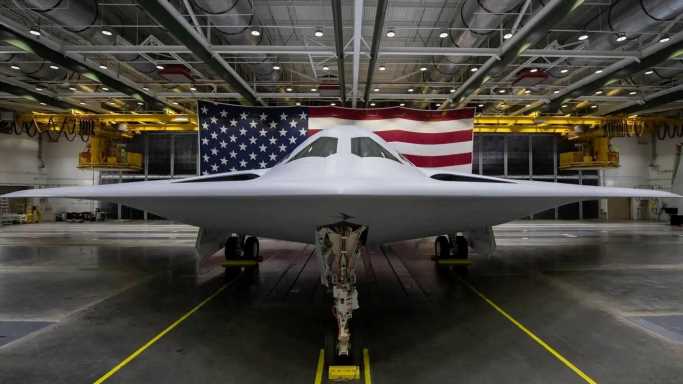Morgan Stanley Changes Ratings, Targets on Lockheed, L3Harris, Northrop
The U.S. House of Representatives last week passed its version of the National Defense Authorization Act (NDAA), calling for a fiscal year 2023 defense budget of $858 billion, a year-over-year increase of 8% and $45 billion more than President Biden’s spending request.
The Senate is expected to vote on the NDAA this week. On Wednesday, Senators discarded or diluted all eight House-passed provisions related to extremism in the U.S. military or civilian society. With those changes, the bill is still expected to pass the Senate and go to the U.S. president for signature.
While the total is enormous, not all the money will be spent in 2023. Morgan Stanley’s team of Kristine T. Liwag, Snehaja Mogre, Matthew Sharpe, Justin M. Lang and Jason T. Holcomb noted Thursday morning in a rating change that “the most significant growth from recent higher defense spending commitments do not begin to materialize until the 2024-2025 timeframe.” Even though defense stocks are trading at a premium of around 5% to the S&P 500, the analysts said that “the market has yet to price in the full extent of geopolitical realities and the Pentagon’s accelerated focus on strategic competition.”
This is “the early innings of an upcycle” with a new U.S. defense focus, away from “counterterrorism/counterinsurgency toward overdue preparation for near-peer (e.g., China, Russia) competition”:
Russia’s conflict with Ukraine has provided an irreversible wakeup call around the need to sufficiently resource defense modernization efforts, jolting the US and its allies into elevated spending plans. Consensus bullishness appears to be waning after the industry’s strong run YTD, but we think it’s still too early to call a peak in Defense. We note there is no modern context for the current geopolitical environment and US defense investment drivers, let alone a “things could get worse” scenario – both in Europe and the Asia-Pacific.
Heading into 2023, the analysts are adopting a price-to-free cash flow valuation (P/FCF) in favor of their previous price-to-earnings (P/E) model because P/FCF “is best-equipped to capture the true economics of this upcycle.”
The analysts’ Top Pick among the defense stocks is Northrop Grumman Corp. (NYSE: NOC). Morgan Stanley reiterated its Overweight rating on the shares and raised its price target from $585 to $626. The price target increase is based on Northrop’s portfolio strength and peer-high growth outlook. The B-21 strategic bomber program and the Ground Based Strategic Deterrent (GBSD) ICBM give Northrop long-term earnings power.
The B-21 is expected to account for almost $20 billion in production costs over the next five years, and the GBSD program awarded to Northrop in 2020 included $13.3 billion for engineering, manufacturing and development. More recent estimates of long-term contract costs for acquisition and maintenance indicate a price tag of $203 billion. Northrop took the wraps off the B-21 on December 2. The ultimate cost of the GBSD program could run as high as $1.2 trillion through 2026.
Morgan Stanley raised its rating on L3Harris Technologies Inc. (NYSE: LHX) from Equal Weight to Overweight and raised its price target from $263 to $278. The analysts noted that L3Harris is trading up 5% for the December quarter to date, well below the S&P’s 12% gain for the period. That is “an attractive risk-reward proposition now that supply chain risks have been priced in.”
Lockheed Martin Corp. (NYSE: LMT), Morgan Stanley’s previous tactical pick, was downgraded from Overweight to Equal Weight, though the price target was raised from $506 to $542. While the analysts remain positive on Lockheed, they “expect recent outperformance to cool as the most significant portion of the company’s accelerated share buyback program (~$8bn in 2022; ~$4bn in 4Q22) expires at year-end.”
Since the 2014 Russian invasion of Crimea, the United States has funneled approximately $21.8 billion in assistance to the Ukrainians. Of that total, about $11.7 billion has been sent to Ukraine since Russia’s February invasion of the country through the Presidential Drawdown Authority. The most recent tranche came last Friday with Biden’s signing of a $275 million drawdown.
And the geopolitical environment could get even worse:
Russia’s invasion of Ukraine in February and summer flare-ups in tensions over Taiwan, including Chinese live fire drills across the Strait, reinforce the increasing fragility of the global security environment, in our view. We see Defense trading today at a ~5% premium to the S&P reflective of relative market complacency around geopolitical stability.
In relation to Taiwan, we note that market complacency may reflect political indecisiveness about the island country that manufactures nearly two-thirds of all semiconductors and 90% of all advanced semiconductors in the world. On one hand, underestimating China’s designs on Taiwan could lead to a lack of preparation if China chooses to take military action. On the other hand, being overprepared could lead to more aggressive behavior and cost an even larger fortune.
Sponsored: Find a Qualified Financial Advisor
Finding a qualified financial advisor doesn’t have to be hard. SmartAsset’s free tool matches you with up to 3 fiduciary financial advisors in your area in 5 minutes. Each advisor has been vetted by SmartAsset and is held to a fiduciary standard to act in your best interests. If you’re ready to be matched with local advisors that can help you achieve your financial goals, get started now.
Source: Read Full Article



